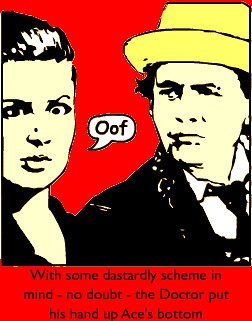Pan’s Labyrinth is another wondrous strange creation from Guillermo del Toro: mesmerising, scary and brilliant.
Ofelia follows her very pregnant mother to an army camp deep in the woods. Mother’s new husband is a captain for Franco’s new regime, putting down the last of the communists at the tail end of the second world war. He’s violent and vicious and cares only for his unborn son.
But nearby in the wood is an ancient labyrinth, a dark and foreboding portal to powers ancient and terrifying. If Ofelia can complete three tasks for the Faun, she’ll be granted her dearest wishes...
Like del Toro’s previous "The Devil's Backbone", the film mixes up the real awful history of the Spanish civil war with fantasy no less alarming. It’s just as unsettling to watch the military barbarity as the gaunt, eyeless monster that guards a lush banqueting table.
It’s also reminiscent of CS Lewis’s "The Lion, the Witch and the Wardrobe" – especially the recent film, which made the second world war more explicit. Ofelia is a more put-upon Lucy, and this Faun isn’t offering her tea.
I talked not-quite-a-year-ago of how it’s only us adults who are freaked by horrid things done to and by children. We’re the ones to harbour fantasies of childish innocence and kindness. Children know, from school and everyday life, that children are full of vicious and untempered cruelty.
Still, we could also see why Neil Gaiman was in trouble for taking his littlest to see this one.
Speaking of which, this morning I finished his Fragile Things – a collection of short stories, poems and bits of idea.
Gaiman has often been rather cosily strange, with the feel of a Grimm’s fairy tale read by an open fire. Yet many of the stories here are thuggish and nasty, lacking what Susanna Clarke has called his "Wodehousian generosity of spirit", which made "Anansi Boys" and "Stardust" so appealing. There are zombies and gangsters and paedophiles and killers in this, with no redeeming features whatever.
Where Gaiman’s at his best is creating characters we care about, and then exploring the strange realms from behind their eyes. The final novella, "Monarch of the Glen" revisits one of the gangsters from a previous entry, who is no less powerful of scary than when we last met him.
Yet, by telling the story from the perspective of Shadow (the same character as from the novel "American Gods"), and detailing Shadow’s own qualms and uncertainties, it’s a much kinder feeling adventure.
"The Problem of Susan" is another haunting highlight, revisiting the spurned Queen of Narnia. It confronts her brusque dispatch in "The Last Battle" – where she’s the only one of her siblings not allowed into Heaven because she’s too fond of lipstick. More than that, it confronts the psycho-sexual elements implicit in that distinction, and the cruel way the other Pevensie’s find their way to paradise (Lewis kills them all off in a train crash).
"There is so much in the [Narnia] books that I love, but each time I found the disposal of Susan to be intensely problematic and deeply irritating. I suppose I wanted to write a story that would be equally as problematic … if from a different direction."
Neil Gaiman, Introduction to Fragile Things, p. xxii.
With reference to other strange children’s fictions like Mary Poppins and Dahl’s Mathilda, it manages to be something more altogether about the faults and something extra with which we fill up our kids.Think my favourite is the opening "A Study in Emerald", which nicely twists the classic Holmesian short on its head. Not only does that there link let you read the whole story, but Wikipedia then goes and explains it.









